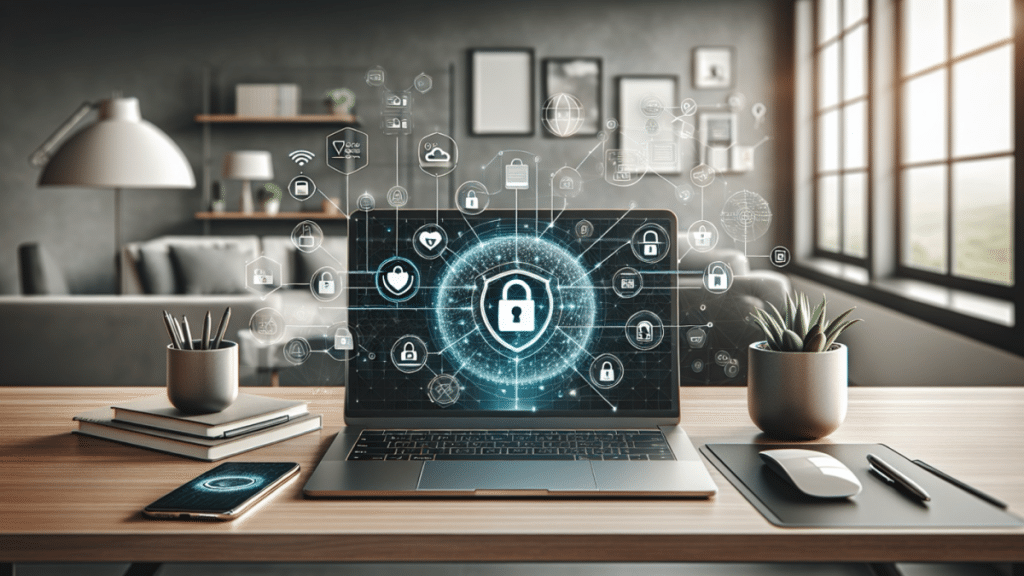You’re a business owner navigating the challenges of remote work. With employees scattered across various locations, how do you ensure your company’s sensitive data remains protected? This article explores key strategies for safeguarding information during remote work transitions, addressing the risks, technological solutions, and best practices that can help your business maintain data security in this new work environment.
The shift to remote work has brought unprecedented challenges for companies worldwide. As businesses adapt to this new normal, protecting sensitive data has become a top priority. The distributed nature of remote work exposes organizations to new vulnerabilities, making it crucial to implement robust security measures. However, with the right approach, companies can maintain data integrity and confidentiality, even as their workforce operates from diverse locations.
Assessing the Risks
Before implementing security measures, it’s essential to understand the potential risks associated with remote work. And let’s face it, there are quite a few. Unsecured home networks, personal devices and the use of public Wi-Fi can all pose significant threats to company data.
Additionally, the lack of physical oversight can lead to increased instances of human error or negligence. By identifying these risks, companies can develop targeted strategies to address them effectively.
Implementing Technological Solutions
To mitigate these risks, businesses must leverage appropriate technological solutions. Virtual Private Networks (VPNs) are a crucial tool in this regard, encrypting data transmissions and masking IP addresses. Residential proxies not only ensure greater anonymity by routing traffic through real IP addresses, but also help businesses avoid detection and bypass geo-restrictions, making them essential for secure, large-scale web scraping, competitive intelligence gathering, and safeguarding sensitive corporate activities online.
Multi-factor authentication adds an extra layer of protection, ensuring that only authorized personnel can access sensitive information. Cloud-based security solutions and endpoint detection and response (EDR) systems can also play a vital role in safeguarding data across multiple devices and locations.
Educating and Training Employees
Technology alone isn’t enough to protect your data. Your employees are the first line of defense against security breaches. Providing comprehensive training on cybersecurity best practices is crucial.
This includes educating staff about phishing scams, the importance of strong passwords and the risks associated with using public Wi-Fi. Regular refresher courses and updates on emerging threats can help keep security at the forefront of employees’ minds.
Establishing a Framework for Remote Work Security
Clear guidelines are essential for maintaining data security in a remote work environment.
Companies should develop and communicate comprehensive policies covering aspects such as acceptable use of company devices, data handling procedures and incident reporting protocols.
These policies should be regularly reviewed and updated to address new challenges and technologies as they emerge.
Keeping a Watchful Eye on Data Movement
With employees accessing company data from various locations, it’s crucial to implement robust monitoring systems. This includes tracking data access and movement, as well as implementing role-based access controls.
Regular audits can help identify potential vulnerabilities or suspicious activities, allowing for prompt intervention when necessary.
Securing Physical and Digital Environments
Data protection isn’t just about digital security. It’s also important to consider the physical environment where remote work takes place. Encourage employees to create secure workspaces, free from potential eavesdroppers or unauthorized viewers.
Provide guidance on safely storing and disposing of physical documents containing sensitive information. Additionally, ensure that all company-issued devices are equipped with up-to-date security software and encryption tools.
As remote work continues to shape the business landscape, protecting company data remains a critical challenge. By implementing a comprehensive approach that combines technological solutions, employee education, clear policies and ongoing monitoring, businesses can significantly reduce the risks associated with remote work.
Remember, data security is an ongoing process that requires constant vigilance and adaptation. Stay informed about emerging threats and be prepared to evolve your strategies accordingly. With the right measures in place, your company can thrive in the remote work era while keeping its valuable data safe and secure.
